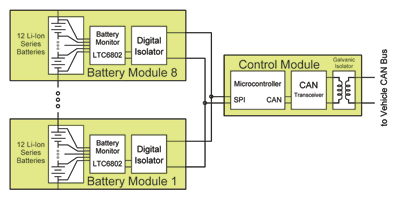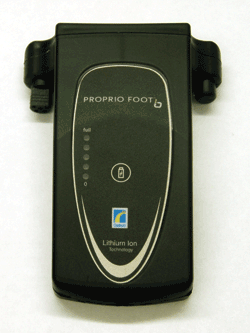Battery Management Architectures for HEVs
Squeezing the maximum capacity out of the smallest battery pack in HEVs requires careful control and monitoring of the SOC.
http://www.nxtbook.com/nxtbooks/hearst/projectpower_200902/index.php?startid=5

Diagram of parallel modules with CAN gateway
Achieving Cell Balancing for Lithium-Ion Batteries
Cell balancing allows the selection of a much smaller battery to achieve a desired output capacity.
http://www.nxtbook.com/nxtbooks/hearst/projectpower_200902/index.php?startid=11

Low-current balancer for a 13-cell battery is embedded in the battery housing.
Portable Medical Devices Target Battery Accuracy
The accuracy of the gas gauge is as important as the capacity of the battery for today’s portable medical devices.
http://www.nxtbook.com/nxtbooks/hearst/projectpower_200902/index.php?startid=15

This Li-ion pack with a fuel gauge and cell balancing is part of a prosthetic foot.
Get the most charge for your portable design
Batteries have in recent years become the darling technology used in all aspects of power electronics and are creeping into areas such as hybrid electric vehicles and even critical safety areas such as medical devices. Li-ion battery technology is moving front and center as the battery technology of choice for consumer devices, and is now considered with increasing demand for use in portable devices in the military, medical, and industrial markets. The choice of Li-ion has much to do with its high-voltage capacity per cell, which can provide a 3x increase compared to NiCD and NiMH batteries, and the 20% to 50% smaller volume compared to NiCD and NiMH designs.
This month we offer three excellent articles that provide you with important information about batteries and what you need to know for your next design. The first is about battery management for hybrid electric vehicles and the challenge that battery system designers face to squeeze the maximum capacity out of the smallest battery pack. Designers need extreme control and this article tells you what the latest monitoring ICs offer to provide control and flexibility without compromising performance.
Next, you’ll find out about achieving cell balancing for lithium-ion batteries. This technology allows the use of much smaller batteries to achieve the desired output capacity. The balancing circuit for Li-ion batteries force all of the cells to have identical voltages and allows the them to achieve a higher state of charge.
Finally, we offer invaluable information about portable medical devices and the need for battery accuracy. As you might guess, the accuracy of the battery fuel gauge is as important as the battery capacity for critical yet portable medical devices. Here’s what you need to know about the most recent and best battery accuracy technologies.
Paul O’Shea
For more on Project Power, visit www.electronicproducts.com/projectpower
Advertisement
Learn more about Electronic Products Magazine





